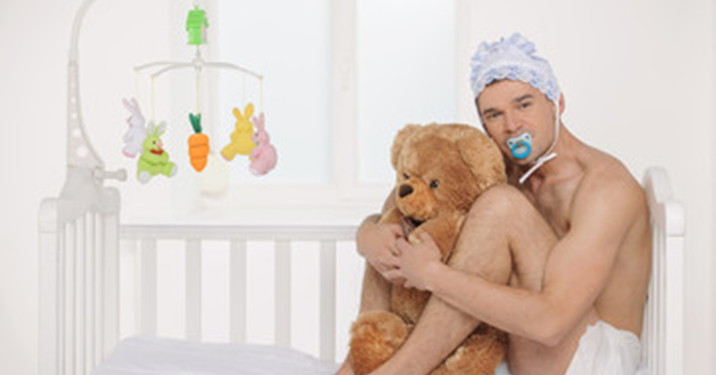Giving back to Mother Nature shouldn’t always entail being an active member of an environmental conservation group. Neither it involves lobbying Congress to enact strict conservation laws. Sometimes, it comes down to making simple lifestyle decisions like buying a biodegradable adult diaper.
Biodegradable diapers have gained considerable recognition in the recent past mainly due to their eco-friendliness. But as you shall find, these diapers can provide many more benefits.
If you’ve been wondering why you should abandon your regular diapers for biodegradable ones, this article is for you. Let’s examine what constitutes a biodegradable diaper and why these nappies are worth every penny. marius blomlie reset
Introducing Biodegradable Diapers
Biodegradable denotes a substance that can be readily decomposed by living organisms (mainly bacteria) to avoid environmental pollution. Therefore, biodegradable diapers refer to disposable diapers that are easily compostable. These nappies are also known as green diapers. errordomain=nscocoaerrordomain&errormessage=could not find the specified shortcut.&errorcode=4
Now, biodegradability isn’t always a top consideration while shopping for diapers. But the growing awareness of the need for environmental preservation has changed everything. It’s easier to find premium-quality biodegradable diapers today than a few years ago.

5 Benefits of Biodegradable Diapers
1. Biodegradable Diapers Are Compostable
Compostability is the biggest reason to switch from regular nappies to biodegradable ones. Investing in biodegradable diapers is your little way of doing the planet a huge favor. Unlike their non-biodegradable counterparts, these nappies will unlikely end up choking our landfills.
You Can Read This Simler Article: Self-control is strength. Calmness is mastery. You – tymoff
Note that adults undergo an average of 6 diaper changes daily, which can translate into thousands of diapers depending on the duration an individual needs to wear incontinence briefs. Nappies constitute about 2% of the total waste in the United States alone.
You can only imagine the unsightly spectacle caused by thousands of diapers lying in landfills. That’s not to mention the associated health hazards and waste management costs, and this figure could translate into billions of nappies worldwide.
With climate change already becoming a reality in many regions, using green nappies is a significant step towards making Mother Earth more habitable.
2. Biodegradable Diapers Are Easy To Produce
One primary factor that makes biodegradable diapers compostable is that they’re made from most (if not all) natural ingredients. Examples include corn and wood pulp.
Even better, most of these raw materials are incredibly easy to obtain. They don’t require expensive treatment to prolong their durability since compostable nappies are generally meant to be disposable. personal injury attorney san fransisco dolan law
Bamboo has become a go-to raw material for manufacturing biodegradable diapers. And while some pseudo-conservationists may take issue with this, it’s reassuring to know that bamboo is the fastest-growing wooded plant on the planet. The plant also thrives primarily in the wild, which means there’s little human interaction as far as feeding it potentially toxic chemicals.
Moreover, the processes involved in obtaining natural raw materials for biodegradable diapers, such as bamboo pulp, tend to be cheaper and faster.
3. Biodegradable Diapers Are Free From Toxic Chemicals
The fact that biodegradable diapers are mostly made from all-natural ingredients reflects positively on their long-term health effects. That’s a welcome relief, considering that the areas of the body typically covered by diapers – bum and groin – tend to be hypersensitive to chemical toxins. taiwan self-driving
Green diapers aren’t treated with chlorine, bleach, or fragrances like most regular diapers. Therefore, the wearer isn’t exposed to the irritating effects of these substances.
Other hazardous chemicals in regular diapers include polychloro dibenzo-p-dioxins (PCDDs), ethylene benzene, xylene, toluene, and phthalates.
Exposure to these compounds may trigger skin problems, including irritation, itchiness, and hives. The chemicals may also increase the susceptibility to asthma attacks and low sperm count.
4. Biodegradable Diapers Are Convenient To Use
We’ve already hinted that most green nappies are designed to be disposable. That means you’ll need to discard them as soon as they get soiled instead of washing and reusing them.
Some people may cite concerns like long-term cost inefficiency and repeated trips to the grocery. However, these nappies make up for that with their incredible convenience.
Let’s face it – the sight of a soiled diaper is anything but pleasant. And while most people can endure the sight and smell of baby poo, we cannot say the same about adult fecal matter. Connect.xfinity.com Email
The fact that adult diapers are single-use makes them especially a welcome purchase for squeamish users. These nappies are also suitable for traveling parents.
5. Biodegradable Diapers Can Be Cost Effective In The Long Run
Biodegradable diapers may look expensive at first glance. But that’s only if compared against their non-biodegradable at face value. Certain factors might make green nappies more affordable in the long run.
First, biodegradable diapers are made from readily available natural raw materials. Increased availability of raw materials translates to low production costs, which reflects positively on the price of the finished products.
Also, the natural materials used in making biodegradable nappies present minimal risks of skin infections. This reduces the medical expenses for diaper rash and similar complications.
The fact that most green nappies are disposable can reduce your monthly expenses on water and soap. Not to mention the precious time saved not having to wash nappies.

Summary
There’s enough reason to ditch your regular diapers for degradable nappies. Skyward FBISD From giving back to the planet to keeping your skin rash-free, the benefits of green nappies are virtually limitless.
Also, Read The Following: Wegmans











Discussion about this post